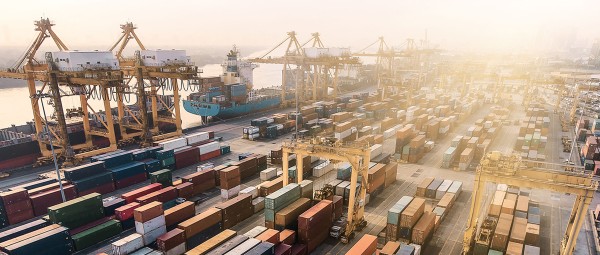Digital logistics: The cube that keeps things rolling
Every year, Schaeffler sends hundreds of thousands of goods consignments around the world by ship, rail, air, and truck. The company ships around 20,000 standard containers a year – this corresponds to the capacity of a container ship of the currently largest class. But what means of transport and what transport route is the cheapest, most reliable, and fastest? And which is the most climate-neutral option? Until now, logistics employees had to use various data and tools to determine these questions. This has been a thing of the past since 2021. Many of these tasks are now carried out by the Transportation Data Cube (TDC).
The best transport routes

The Schaeffler Transportation Data Cube finds the best transport routes – by water, rail or air.
The Transportation Data Cube is something like the magic cube of logistics. A cube that Schaeffler has developed in-house. The digital logistics tool filters out of billions of pieces of data those that employees require to determine the optimum transport route in each case.
Thousands of pieces of data must be analyzed in order to find the ideal transport route. These data originate from around 20 different logistics service providers and from Schaeffler itself. With its more than 70 international locations and several thousand suppliers and customers, several hundred thousand pieces of data are generated at Schaeffler alone – to talk about a complex task here sounds almost like an understatement.
And this is where digital logistics now come into play. The Transportation Data Cube carries out the evaluation of the data. It automatically searches for the cheapest, most reliable, and fastest transport routes by water, rail, or air worldwide.
A factor that is playing an increasingly important role recently are disruptions within global traffic flows such as the blocked Suez Canal in the spring of 2021. Warnings of such irregularities flow in from the external service provider Everstream. Thanks to the Transportation Data Cube, relevant disruptions can be detected and alternatives can be identified, taking into account selected criteria. These criteria can be delivery dates but also costs and CO2-related factors.
Data evaluation made easy
The data gathered with the TDC form the basis for numerous features, including a detailed CO2 calculation and a digital image of all Schaeffler’s logistics routes. The digital logistics tool makes the complex analyses available on the intranet via a user interface that is intuitive to operate. The employees can also find accurate information about the status and location of the respective consignment here. This is the same as for every private order – except that at Schaeffler these consignments are not usually small packages but large containers, for example.
The Transportation Data Cube bundles data for multiple purposes:
- Calculation of freight costs
- Price negotiations with logistics service providers
- Provision of enhanced shipment data from logistics service providers
- Performance evaluation of logistics service providers
- Company-wide use of continuously maintained master data
- CO2 calculation
The Transportation Data Cube is easy to use and can calculate freight costs and the CO2 footprint of shipments, among other things.
Logistics: Digitally analyzed data reduce emissions in the transport sector

Thanks to the integrated Carbon Emission Calculator, the CO2 emissions of the transport routes can be included in the planning.
Whereas until recently costs, transit times, and availability were the main influencing parameters, the level of CO2 emissions is increasingly becoming the decisive factor when evaluating different transport routes. Ultimately, Schaeffler wants to achieve climate neutrality along its entire supply chain by 2040. In order to achieve this target, it is important to know who produces how much CO2 and where. This is where the Transportation Data Cube provides assistance. It knows the corresponding CO2 emissions for all logistics routes and replaces the previous complex manual calculations.
November 2022

